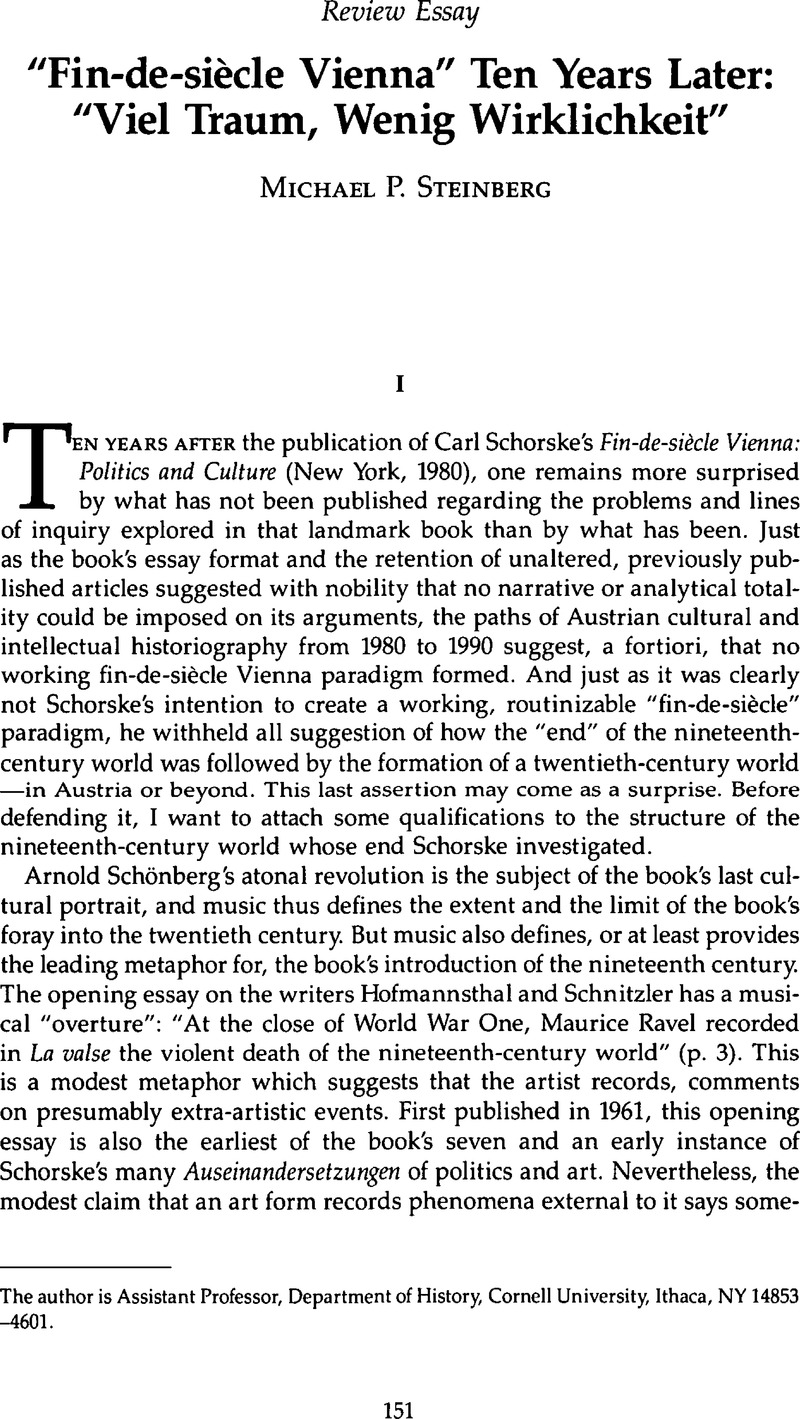Published online by Cambridge University Press: 10 February 2009

1 Botstein, Leon, “The Vienna Connection,” The Partisan Review 2 (1982), pp. 262–273Google Scholar.
2 Most guilty of this kind of sentimental mythification has been Frederic Morton, the popular historian. His two Austrian histories, A Nervous Splendor (Boston, 1979)Google Scholarand Thunder at Twilight (New York, 1990)Google Scholarpresent two entirely interchangeable scenarios from the Austrian world theater. The deaths of Crown Prince Rudolf in 1889 and of Archduke Franz Ferdinand in 1914 are melodramatically reconstructed as identical paradigms of imperial theatricality, hysteria, and demise. But Morton went even further in a recent column on the Felix Bloch affair (“Felix Bloch's Two Sides–and Vienna's.” The New York Times, August 7, 1989, Section A, p. 15, column 1). He argued that real Austrian culture blurs all distinctions between reality and theater, so that the question of Bloch's guilt or innocence of espionage is immaterial within an Austrian perspective. Felix Bloch takes his place next to Rudolf and Franz Ferdinand. Metternich himself would blush.
3 See Gay, Peter, Freud, Jews, and Other Germans: Masters and Victims in Modernist Culture (New York, 1978), pp. 29–35Google Scholar; and Freud: A Life for Our Time (New York, 1988)Google Scholar, passim.
4 Sulloway, Frank, Freud: Biologist of the Mind (New York, 1979)Google Scholar.
5 Ricoeur, Paul, Freud and Philosophy: An Essay on Interpretation, trans. Savage, Denis (New Haven, 1970), p. 379Google Scholar.
6 See “Portrait of a Period,” in The jew as Pariah, ed. Feldman, R. (New York, 1978), pp. 112–121Google Scholar.
7 Clair, Jean, ed., Vienne 1880–1938. L'apocalypse joyeuse (Paris, 1986)Google Scholar.
8 In a forthcoming book on musical taste in nineteenth-century Vienna, Leon Botstein will explain in detail just how and why the hand-produced Bösendorfer symbolized the tastes and ideologies of the Viennese Bildungsbürgertum.
9 On the reception and impact of the 1986 Vienna show in Paris, see Heinich, Nathalie and Pollak, Michael, Vienne à Paris: Portrait d'une exposition (Paris, 1989)Google Scholar.